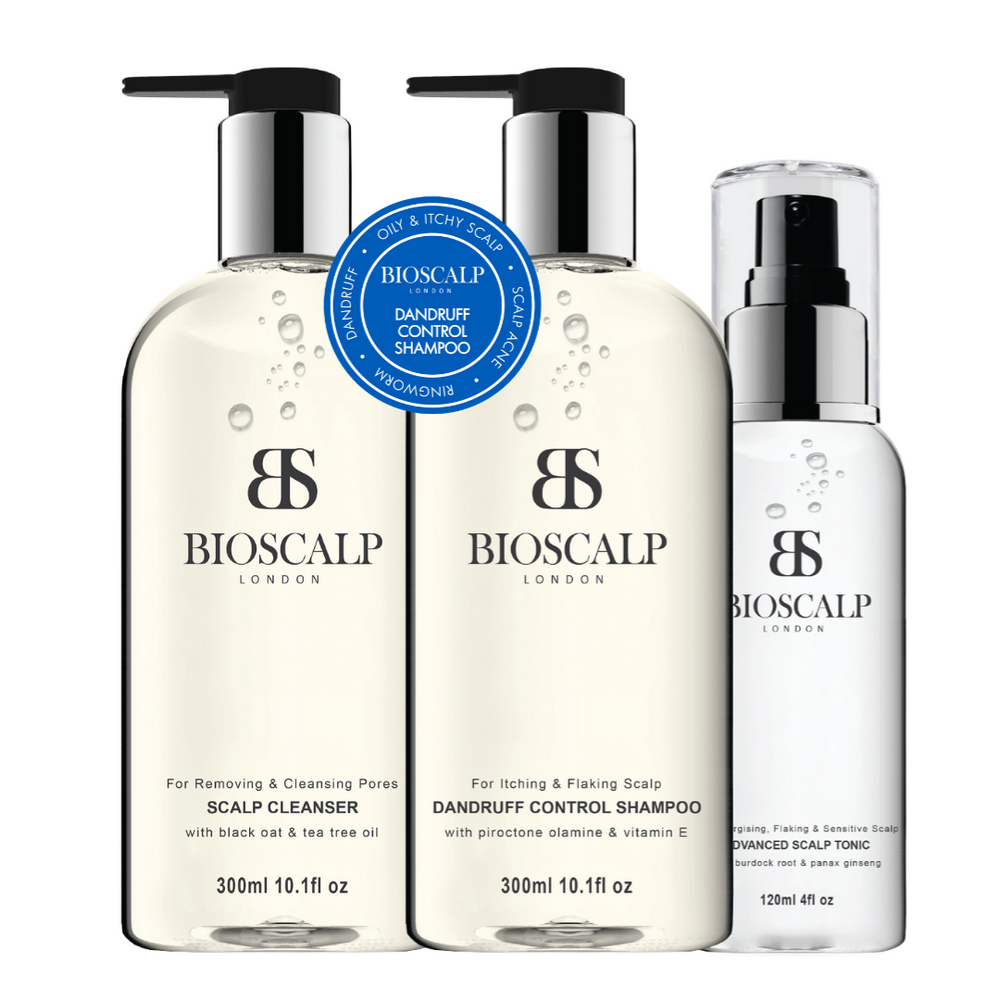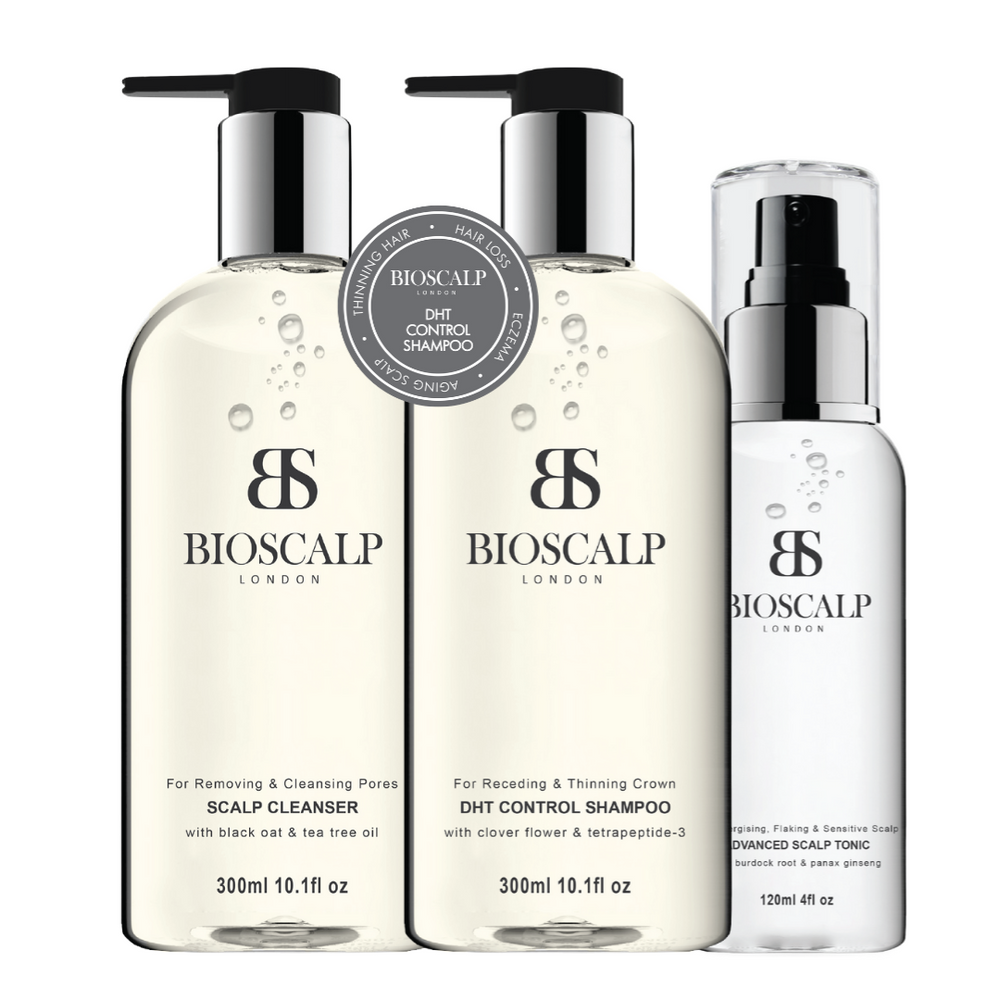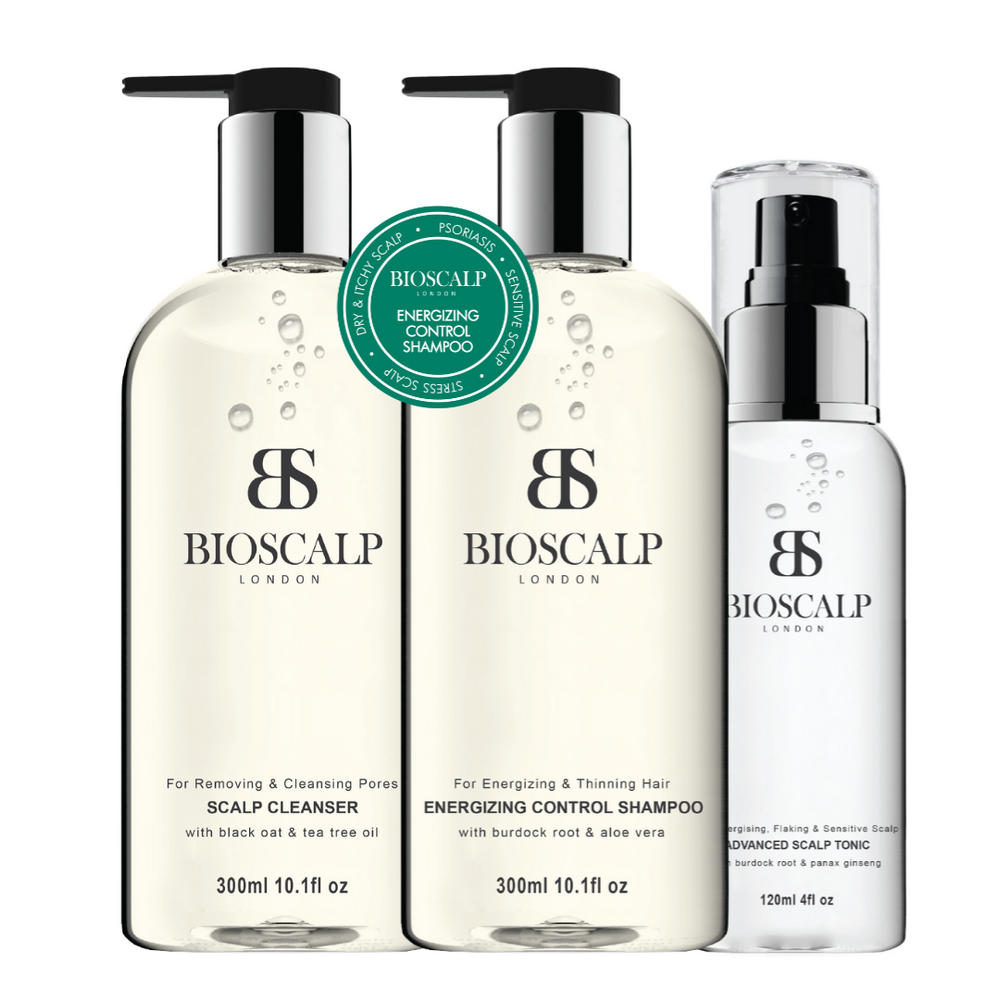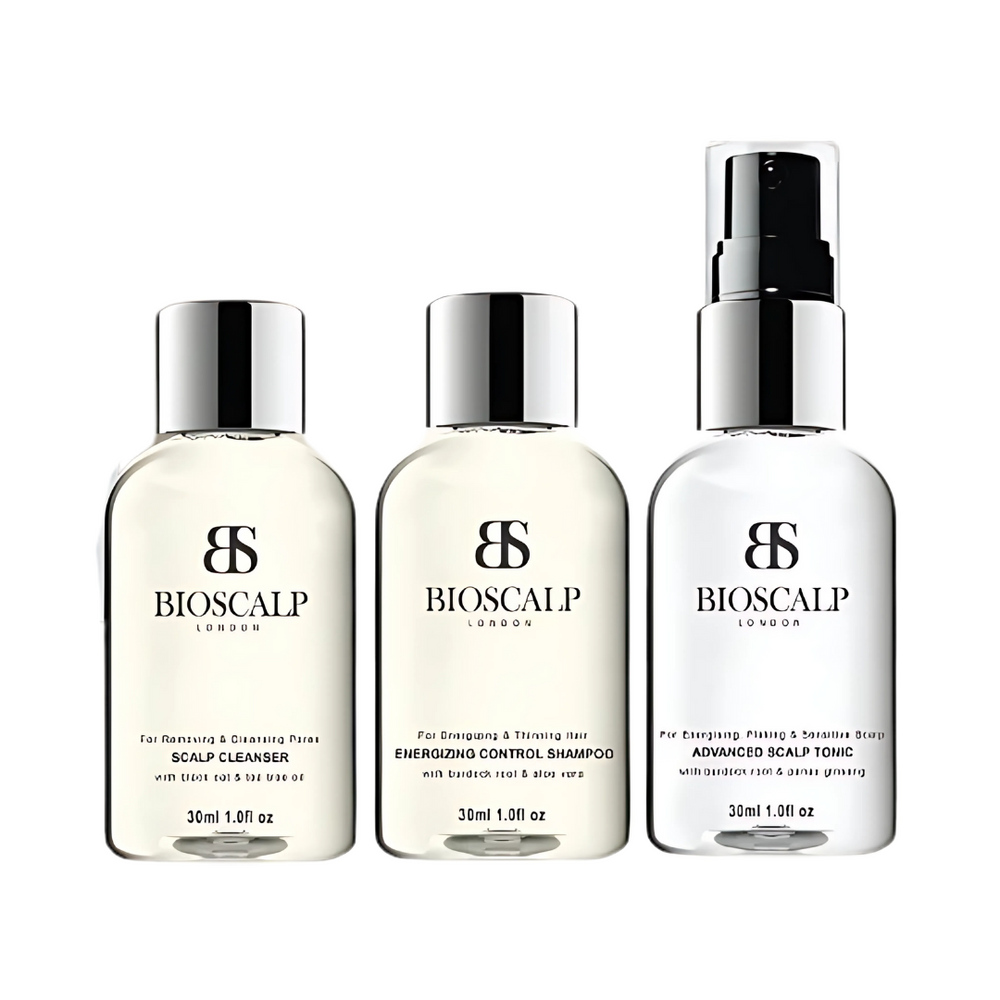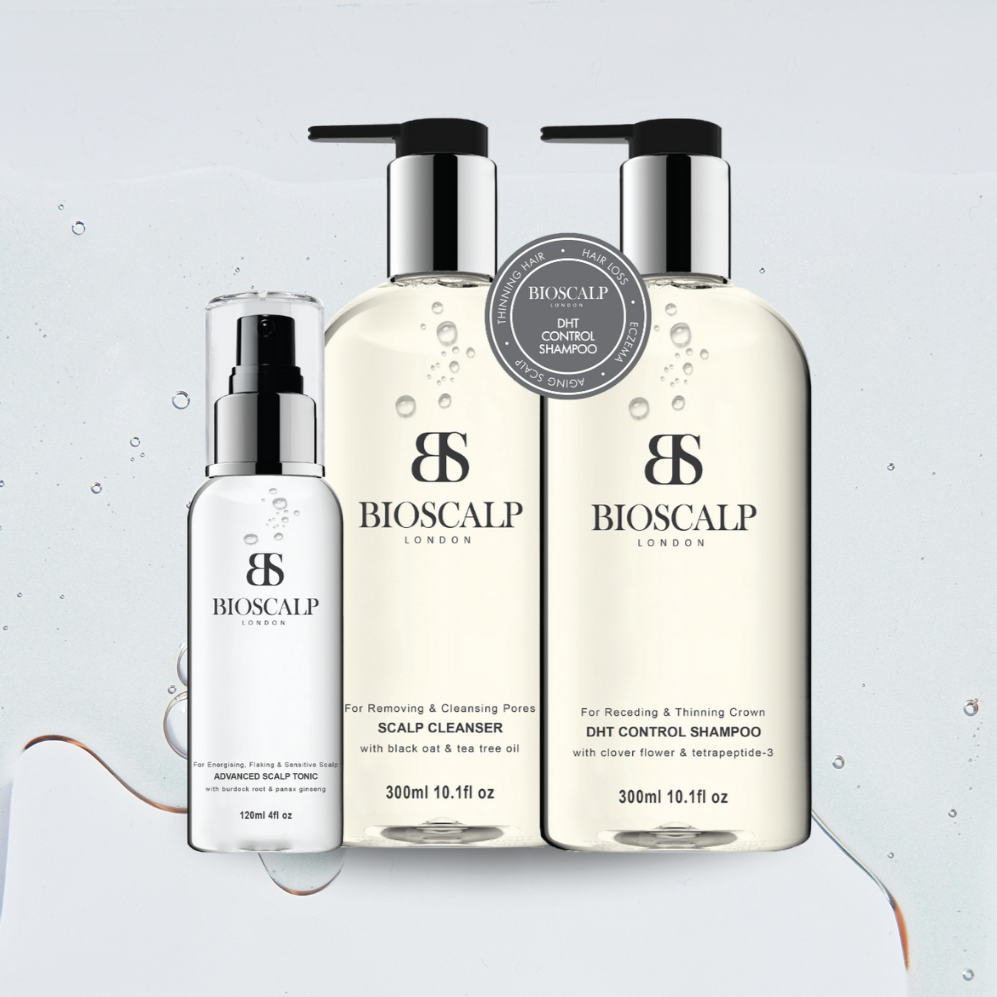Dandruff—it’s a common scalp condition that many of us deal with, but few truly understand. At the heart of dandruff lies a single-celled microbe called Malassezia globosa. Let’s take a closer look at how this tiny fungus wreaks havoc on your scalp and the best ways to keep it in check.

What Is Malassezia, and Why Is It on Your Scalp?
Malassezia globosa is a type of yeast that is part of the natural microbiome of your scalp. This microbiome is a diverse community of microorganisms—both fungi and bacteria—that coexist on your skin, helping to maintain a balanced and healthy environment. Among them, Malassezia globosa plays a particularly important role due to its ability to break down sebum, the oily substance your scalp produces to protect and hydrate the skin and hair.
While Malassezia is harmless under normal conditions, it can become problematic when the balance of the scalp’s ecosystem is disrupted. Factors such as excess oil production, hormonal changes, environmental stress, and improper hair care routines can create the perfect conditions for Malassezia to grow out of control. This overgrowth is when problems like dandruff start to appear.
The Good and the Bad: Malassezia’s Dual Role
The Good
In moderate amounts, Malassezia globosa helps maintain scalp health by breaking down sebum into smaller components that keep the scalp’s surface smooth and hydrated. It is an essential part of the scalp’s natural defense system, forming a barrier against harmful microorganisms.
The Bad
Problems begin when the microbe feeds on an overabundance of sebum, producing oleic acid as a by-product. For individuals sensitive to oleic acid—nearly half the population—this triggers irritation, redness, and the rapid shedding of skin cells, leading to dandruff.
Why Is It Always There?
Malassezia is a commensal organism, which means it has evolved to live symbiotically on human skin without typically causing harm. In fact, it’s estimated that up to 90% of adults have some level of Malassezia presence on their skin and scalp. The scalp, being rich in sebum-producing sebaceous glands, provides the perfect environment for this microbe to thrive.
What Sets It Off?
Several factors can disrupt the delicate balance of your scalp’s microbiome and cause Malassezia to become an overactive, unwelcome guest:
Excess Sebum Production
High levels of oil on the scalp—caused by hormonal changes, genetic factors, or lifestyle habits—give Malassezia more food, fueling its growth.
Poor Scalp Hygiene
Irregular washing or the use of harsh products can either lead to an oil build-up or strip the scalp of its natural oils, both of which can trigger fungal overgrowth.
Humidity and Sweat
Warm, moist environments encourage the rapid proliferation of Malassezia, especially in individuals prone to sweating or living in humid climates.
Weakened Scalp Barrier
When the scalp’s natural defenses are compromised—due to stress, underlying skin conditions like psoriasis, or excessive use of styling products—Malassezia can multiply unchecked.

The Chain Reaction: How Malassezia Causes Dandruff
Dandruff isn’t just a surface-level issue—it’s the result of a complex chain reaction happening on your scalp. At the center of this process is Malassezia globosa, a microbe that thrives on the natural oils your scalp produces. While Malassezia is a normal part of your scalp’s ecosystem, its activity can set off a domino effect in individuals sensitive to its by-products. This leads to a series of events that result in the telltale signs of dandruff: white flakes, itching, and irritation. Let’s break down the step-by-step process to understand how this tiny microbe triggers big problems.
Feeding on Scalp Oils
Your scalp produces natural oils called sebum to keep your skin and hair moisturized. Malassezia thrives by feeding on this sebum.
Oleic Acid Production
As Malassezia breaks down sebum, it releases a by-product called oleic acid. While this process is natural, it’s not without its downsides.
Sensitivity to Oleic Acid
Here’s the kicker: about 50% of people are sensitive to oleic acid. This sensitivity triggers an immune response, causing the scalp to defend itself.
Accelerated Skin Cell Renewal
In sensitive individuals, oleic acid overstimulates the scalp, speeding up the skin cell renewal process. This leads to clusters of dead skin cells that appear as visible flakes.
Scalp Irritation
This process doesn’t just stop at flakes. The immune response often results in inflammation, redness, and itching, making dandruff even more uncomfortable.
Fungal Overgrowth
When Malassezia grows too quickly, it upsets the natural balance of the scalp. This fungal overgrowth intensifies the flaking and irritation, worsening dandruff symptoms.
Severity Matters: The Malassezia-Dandruff Connection
Studies have shown that the density of Malassezia on the scalp directly correlates with dandruff severity. The more Malassezia there is, the more likely it is to overwhelm your scalp’s natural defenses.
How to Tackle Malassezia and Control Dandruff
The key to managing dandruff is controlling the growth of Malassezia and soothing the scalp’s reaction to oleic acid. Here are the most effective approaches:
Use Anti-Dandruff Shampoos
Look for products with antifungal ingredients like pyrithione zinc, selenium sulfide, or ketoconazole. These active ingredients target Malassezia, helping to restore balance to your scalp.
Maintain Scalp Hygiene
Regular washing helps control oil build-up, creating an environment less hospitable to Malassezia.
Moisturize Your Scalp
Avoid harsh products that strip your scalp of natural oils, as this can stimulate excessive sebum production and worsen dandruff.
Conclusion
While dandruff may be a nuisance, understanding Malassezia globosa’s role is crucial because while it is a natural part of your scalp’s ecosystem, the key to avoiding dandruff lies in maintaining a healthy scalp environment. By keeping the scalp balanced and controlling the factors that promote fungal overgrowth, you can enjoy healthier hair and a flake-free life.
Curious about which anti-dandruff solutions work best for your scalp? Explore scientifically backed treatments and expert tips to combat dandruff today!


